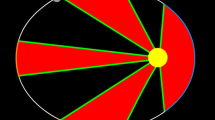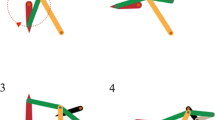Abstract
New technologies allow the display of text, static visuals, and animations. Although animations are inherently attractive, they are not always beneficial for learning. Problems may arise especially when animations modify the learner's cognitive load in an unintended way. In two learning experiments with 40 and 26 university students, the effects of animated pictures on knowledge acquisition were investigated. Some pictures displayed visual simulations of changes over time, whereas other pictures could be manipulated by learners to represent different states in time. Results showed that manipulation pictures had an enabling function for individuals with high learning prerequisites, whereas simulation pictures had a facilitating function for individuals with low learning prerequisites. However, the facilitating function was not beneficial for learning, because learners were prevented from performing relevant cognitive processes on their own. A careful analysis of the interrelation between different kinds of cognitive load and the process of learning is therefore required.
Similar content being viewed by others
References
Amthauer, R. (1973).Intelligenz-Struktur-Test 70 (IST 70), Göttingen, Germany: Hogrefe.
Clarke, T., Ayres, P., & Sweller, J. (2005). The impact of sequencing and prior knowledge on learning mathematics through spreadsheet applications. [This special issue].Educational Technology Research and Development, 53(3), 15–24.
Kalyuga, S., Chandler, P., & Sweller, J. (1998). Levels of expertise and instructional design.Human Factors, 40, 1–17.
Kalyuga, S., & Sweller, J. (2005). Rapid dynamic assessment of expertise to improve the efficiency of adaptive e-learning. [This special issue].Educational Technology Research and Development, 53(3), 83–93.
Lowe, R.K. (1999). Extracting information from an animation during complex visual learning.European Journal of Psychology of Education, 14, 225–244.
Mayer, R. E. (1997). Multimedia learning: Are we asking the right questions?Educational Psychologist, 32, 1–19.
Mayer, R. E. (2001).Multimedia learning. New York: Cambridge University Press.
Moreno, R., & Valdez, A. (2005). Cognitive load and learning effects of having students organize pictures and words in multimedia environments: The role of student interactivity and feedback. [This special issue].Educational Technology Research and Development, 53(3), 35–45.
Paas, F., & van Merriënboer, J. J. G. (1994). Instructional control of cognitive load in the training of complex cognitive tasks.Educational Psychology Review, 6, 357–371.
Paas, F., Tuovinen, J. E., van Merriënboer, J. J. G., & Darabi, A. (2005). A motivational perspective on the relation between mental effort and performance: Optimizing learners' involvement in instructional conditions. [This special issue].Educational Technology Research and Development, 53(3), 25–33.
Salomon, G. (1994).Interaction of media, cognition, and learning. Hillsdale, NJ: Erlbaum.
Schnotz, W., Boeckheler, J., & Grzondziel, H. (1999). Individual and co-operative learning with interactive animated pictures.European Journal of Psychology of Education, 14, 245–265.
Sims, V. K., & Hegarty, M. (1997). Mental animation in the visuospatial sketchpad: Evidence from dual-task studies.Memory & Cognition, 25, 321–332.
Sweller, J. (1999).Instructional design in technical areas. Camberwell, Australia: ACER Press.
Sweller, J., & Chandler, P. (1994). Why some material is difficult to learn.Cognition and Instruction, 12, 185–223.
Sweller, J., van Merriënboer, J. J. G., & Paas, F. (1998). Cognitive architecture and instructional design.Educational Psychological Review, 10, 251–296.
Tversky, B., Morrison, J. B., & Betrancourt, M. (2002). Animation: Can it facilitate?.International Journal of Human-Computer Studies, 57, 247–262.
van Gog, T., Ericsson, K., Rikers, R. M. J. P., & Paas, F. (2005). Instructional design for advanced learners: Establishing connections between the theoretical frameworks of cognitive load and deliberate practice. [This special issue].Educational Technology Research and Development, 53(3), 73–81.
van Merriënboer, J. J. G. (1997).Training complex cognitive skills, Englewood Cliffs, NJ: Educational Technology Publications.
Wallen, E., Plass, J. L., & Brünken, R. (2005). The function of annotations in the comprehension of scientific texts: Cognitive load effects and the impact of verbal ability. [This spcial issue].Educational Technology Research and Development, 53(3), 59–71.
Author information
Authors and Affiliations
Corresponding author
Rights and permissions
About this article
Cite this article
Schnotz, W., Rasch, T. Enabling, facilitating, and inhibiting effects of animations in multimedia learning: Why reduction of cognitive load can have negative results on learning. ETR&D 53, 47–58 (2005). https://doi.org/10.1007/BF02504797
Issue Date:
DOI: https://doi.org/10.1007/BF02504797




